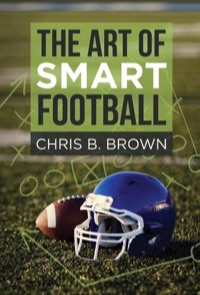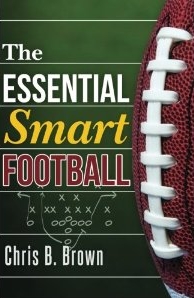In their tag-teamed auguries for the next decade of college football, Stewart Mandel and Andy Staples reflect on the decade of the spread and look to the option offenses of the ’70s to predict what big things might come next:
8. The spread and pro-style offenses will learn to coexist
College offenses constantly go in and out of vogue, which means the spread-offense craze is bound to plateau (if it hasn’t already). [Ed Note: Yes it has, if the goal is to give underdogs a better chance.] Last season, the spread still thrived for teams like Pac-10 champion Oregon, Big East champion Cincinnati and 13-1 Florida. However, Alabama won the national championship with a more traditional, pro-style offense, Stanford defied the trend of recent upstarts by utilizing an old-school, smash-mouth offense and Nebraska’s disruptive defense showed it’s possible to shut down a wide-open attack like Texas’.
So will the recent influx of NFL-influenced coaches like Washington’s Steve Sarkisian and USC’s Kiffin kill the spread? Not exactly. Spread gurus like Notre Dame’s Brian Kelly and Mississippi State’s Dan Mullen keep importing it at new locations, and Arizona State’s Dennis Erickson — a veteran of both levels — is one of several coaches implementing a version of former Texas Tech coach Mike Leach’s Air Raid attack this season.
Instead, the future is likely a hybrid of both systems.
“The great thing would be the combination of both — spread it out and throw it, then be able to do it with two tight ends and run the ball with some power,” said Erickson. “It’s just the evolution of football. I really believe if you can have a combination of all that stuff and confuse [defenses] with different personnel groups, that’s what it’s all about.”
. . .
9. Option offense: Ready for a comeback?
The future won’t belong solely to the pro/spread hybrid. As the spread flourished this past decade, defenses adjusted. More teams adopted a 3-4, allowing more flexibility to spy a quarterback who might double as a fullback.
That shift in defensive philosophy means it’s time for a new-old offensive fad. And since bell-bottoms and platform shoes have already enjoyed minor renaissances, it seems only fair that coaches bring back that staple of the ’70s football experience: the option. We’re not talking about the occasional pitch play. We’re talking about the holy trinity of the dive back, quarterback keeper or pitch.
Paul Johnson, who probably has leisure suits and tearaway jerseys in his closet, has proven at Navy and Georgia Tech that the option still works. How well? In Johnson’s second season at Tech, he won the ACC title.
Most people think the option is a boring, grind-it-out scheme. Not true, said Tom Osborne, an option aficionado who coached Nebraska to national titles in 1994, 1995 and 1997. “Most of the zone plays you see now, if you block things perfectly, you may make seven, eight, nine yards,” Osborne said. “If somebody misses a tackle, you might go a long way. In option football, if you execute correctly, you’ve got enough people to block everybody and theoretically score a touchdown on most every option play.”
. . . So what’s the holdup? Johnson already has proven the option can work in a BCS conference. It’s time to bring it back on a grand scale.
I generally agree with everything Andy and Stewart say, especially the point that whatever the dominant offensive strategy of the 2010s ends up being — and there may not be one — it will be a response to the defensive changes being undergone right now. I’m not sure yet that it will be the option, if for no other reason than we don’t yet know what defensive schemes will be dominant either. We are in a very transitory time, and to get a little perspective, it’s helpful to look at the strategic milieu that the modern spread came out of in the 1990s.
The spread developed essentially in response to two defensive phenomena. The first goes back to Buddy Ryan: the ubiquity of the eight-man front defenses. Although his vaunted “46” defense became famous in the 1980s, in the 1990s teams still used it and, more importantly, they used his philosophies — his eight-man front principles — to overwhelm the run and protection schemes of teams still trying to use traditional personnel, i.e. two runningbacks, one tight-end, and two receivers. Personified by defenses like the one used by Dick Tomey at Arizona, his Under-Shift Double-Eagle Flex — a.k.a. the “Desert Swarm” — these defenses were basically impossible for anyone using traditional sets, personnel and concepts, unless the talent gap was wide enough to overcome the strategic disadvantage. Which is exactly why the small schools led the changes.
In response, through luck or strokes of genius, some teams began spreading it out as far back as the 1980s and early 1990s. Some of these were of the four wide variety but the category also includes “one-back” teams like Washington State and Louisville whose coaches (Dennis Erickson, Joe Tiller, Mike Price, John L. Smith, Bobby Petrino, Scott Linehan, and so on) helped spread the good word to other coaches (ahem, Urban Meyer). This element, the response to eight-man front defenses, is where the spread can claim almost total victory: Not many teams, if any, base out of eight-man fronts anymore (Virginia Tech is a prime example of a great defense that made a very visible switch), while the spread reigns nearly supreme. Indeed, it’s unlikely that teams will ever be able to go back to the total eight-man front approaches for the whole game. It may exist as a very useful package from time to time, but the nickel defensive back is going to be relevant for your team’s success throughout the rest of your lifetime.
The other narrative — one slightly more complicated in the back and forth between O and D, in that the give and take continues today — deals with the increased use of the zone blitz and the offense’s manifold responses. The spread run game evolved for many reasons. One was to deal with the problem the eight-man fronts present, i.e. the numerical issue presented by an extra guy in the box (solved by making the quarterback a legitimate run threat), but another reason it developed was to counteract defensive fronts with linemen dropping into coverage and linebackers trying to fill inside gaps immediately. The term “zone read” is useful because both halves are key to the its success: the “read” obviously gives the offense flexibility, but so does the zone part of the play, which allows linemen to area block and pick up obscure and unpredictable stunts and movement.
Whether or not being “spread” helps against zone blitzes is an ambiguous question due to the vagaries of six-man protection schemes, but the spread is undoubtedly the best offense ever devised if your goal is to run a lot of screens. A multiple spread offense gives a coach more options for constraint plays than any set previously designed: bubble screens, rocket screens, jailbreak screens, slow screens, middle screens, shovel screens, and so on. And remember, screens are the one thing almost every coach recommends against zone blitzes and they are also the one pass that any quarterback at any level can complete, no matter the protection, blitz scheme, or coverage — an important thing when your gameplan involves trying to get the ball to your playmakers.
So I don’t know what the next big thing will be (and if you go back to 1996-2000 I was pretty damn certain it would be the spread), but I wouldn’t be surprised if the 2010s are middling in terms of strategy, though possibly dominated by some new defensive wrinkle or trend. A major factor in this is that the speed of change is faster now than it was even a decade ago — it’s not clear that you can have a “decade” devoted to any one scheme, considering that if a college team has a good season high schools around around the country have the offense installed by the spring. But whatever offensive strategy comes to dominate in time, be it the triple-option, the Power-I, the pro-style offense or the single-wing, we’ll need to first know what defensive schemes are all the rage.
Indeed, what with Nick Saban’s protégés proliferating year-by-year, maybe studying his defenses will tell us what offensive trends to expect. We’re clearly living in Saban’s world — at least for another few weeks.







